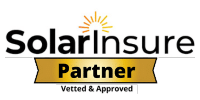There is much to consider when it comes to installing a solar energy system in your home. Fortunately, blogs like this can help you navigate some of your decisions. Overall, understanding the components of a solar energy system isn’t difficult. Most of these technologies are entering the mainstream for the first time, so they just have a learning curve.
For instance, you might have heard of a solar power inverter, which is a main component of any solar network. However, precisely what is a solar power inverter? Let’s break this question down a bit further and better understand what makes this such a crucial piece of technology.
Solar Inverter Definition
A solar inverter is a type of power inverter that converts the solar panel’s DC output into AC power. AC power (or alternating current) is the type of power that homes operate on. DC power (direct current), on the other hand, is the direct energy captured directly from the sun into the solar panel.
The solar panel inverter takes this accumulated DC power and converts it to AC power to be used throughout your home. If you do not currently have a solar system in your house, then you are pulling energy from a utility company. This energy is already AC power when it enters your home.
To be clear, a solar panel is not the same as a solar inverter. And yet, they are dependent on each other to provide energy for your home. While a solar panel captures the energy, the inverter makes this energy usable in your home.
A simple way to think about AC and DC power is to compare them to different radio frequencies. While they both bring content into your radio, you need to be dialed into a particular one. For instance, if you are tuned to a particular frequency, then you will not hear content from another. Similarly, since houses are wired for AC power, DC power will not be able to “play” on that frequency.
In this example, you can think of the solar inverter as the radio dial, shifting from one station to another. So, by shifting DC to AC, the inverter makes the solar energy production “playable” on your home’s frequency.
e isso traz um ponto interessante. Sua casa é diferente dos outros e, portanto, seu sistema solar será adaptado às suas necessidades de energia. Da mesma forma, seu inversor solar será adaptado às mesmas necessidades de energia. Você deve trabalhar com seus profissionais locais para decidir que tipo de inversor é adequado para você. Mas, enquanto isso, aqui estão os tipos comuns de inversores solares. Este é um modelo comum se você precisar de produção de energia em massa. Com um inversor central, todos os painéis solares são conectados em um inversor único e centralmente localizado. Portanto, se você tiver vários painéis solares no telhado, precisará de vários microinversters. Esse tipo de conversão de CA para CC ocorre diretamente no painel antes de alimentar a energia em sua casa. Dependendo da sua situação, pode -se ser mais apropriado para suas necessidades do que as outras. Isso geralmente ocorre porque o conceito é um pouco mais direto. Por um lado, os inversores de cordas tendem a ser mais econômicos em geral.

Different Types of Solar Inverters
Since everyone has different energy needs, different types of solar inverters make the energy production process more efficient. You should work with your local professionals to decide which type of inverter is right for you. But, in the meantime, here are the common types of solar inverters.
Central Inverter
A central inverter, also known as a string inverter, converts DC input from multiple solar panels at once. This is a common model if you are in need of bulk energy production. With a central inverter, all of the solar panels are wired into a single, and centrally located, inverter.
Microinverter
Unlike a central inverter, a microinverter is located directly on the solar panel itself. Therefore, if you have multiple solar panels on your roof, you will need multiple microinverters. This type of conversion from AC to DC happens directly at the panel before feeding the energy into your home.
Which Type of Solar Inverter Is Right for Me?
While there are other types of specialized solar panel inverters, these two are the most common. Depending on your situation, one might be more appropriate for your needs than the others.
However, it is worth noting that standard string inverters, or central inverters, are more common among homeowners. This is typically because the concept is a bit more straightforward. For one thing, string inverters tend to be more cost-effective overall.
Além disso, em vez de muitos pequenos inversores, você simplesmente tem um. Se nada mais, isso pode ser mais benéfico para fins de manutenção no futuro. Mas, como o nome indica, um inversor de string depende de fios que “unissem” os vários painéis solares. Nesta transferência, é possível para alguns Energia a ser perdida . No entanto, eles são mais caros que os inversores centrais, o que torna alguns proprietários um pouco mais hesitantes. Esse é especialmente o caso se você estiver instalando um sistema solar pela primeira vez.
With microinverters, the inverter is right on the panel itself, so this maximizes the amount of energy output. However, they are more costly than central inverters, which makes some homeowners a bit more hesitant. This is especially the case if you are installing a solar system for the first time.
, mas, como mencionado, existem opções diferentes porque casas diferentes têm necessidades diferentes. Para saber mais sobre os inversores solares e o que faz mais sentido para sua casa, procure os profissionais.
Saiba mais sobre os inversores solares hoje. Insights






